How to Change Car Air Filters: 5 Easy Step Tutorial For Better Performance!
Have you ever considered the significant impact a simple air filter change can have on your car’s performance and fuel efficiency?
This essential yet often overlooked maintenance task is your vehicle’s first line of defense against a myriad of particulate contaminants. Ensuring your air filter is clean is not just beneficial; it’s essential for keeping your car running smoothly.
So, let’s see everything you need to know to change car air filters.
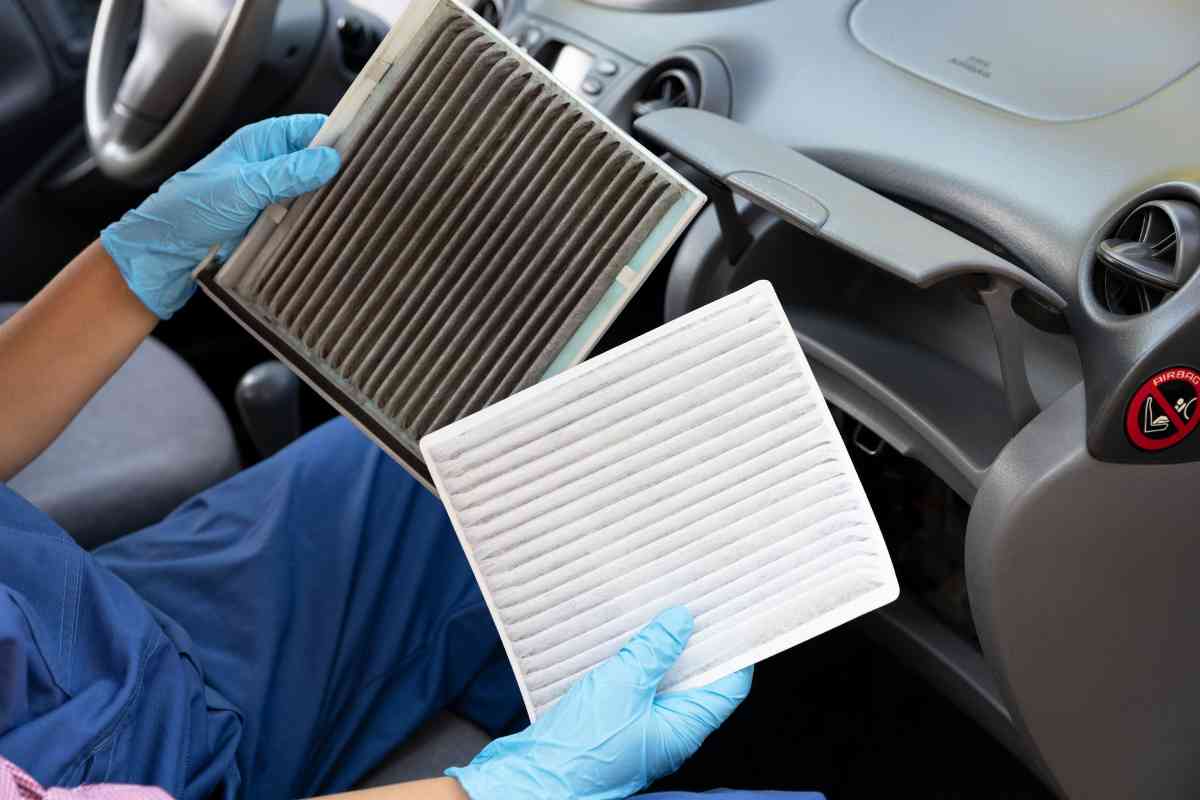
Related Post! How To Change Your Car’s Oil And Oil Filter
How Do You Change Car Air Filters?
To change a car’s air filter, first ensure the engine is cool. Locate the air filter housing and open it by releasing clips or unscrewing. Remove the old filter, clean any debris inside the housing, and install the new filter, ensuring it fits snugly and the housing is securely reassembled.
Maintaining a car can seem intimidating, but changing the air filter is a straightforward task you can master. This small component significantly affects your vehicle’s efficiency, with benefits ranging from improved performance to extended engine life.
Here’s why you should keep an eye on your air filter:
- Increased Fuel Efficiency: A clean air filter can notably improve your vehicle’s fuel economy. Over time, filters clogged with dust and debris force your car to expend more fuel for the same power output. Simply keeping the air filter fresh is an effortless way to cut fuel costs.
- Enhanced Engine Performance: Ensuring a steady flow of clean air to your engine boosts its responsiveness. From personal experience, the moment I replaced my old, clogged filter, the difference in throttle response was palpable.
- Prolonged Engine Life: A dirty air filter allows dust and debris to enter the engine, potentially causing wear and leading to costly repairs. Regular changes can safeguard your engine, enhancing its longevity.
- Reduced Emissions: A clean air filter helps maintain an optimal air-fuel balance, which can significantly reduce your car’s emissions. It’s a simple step towards being more environmentally friendly.
- Cost Savings: Regular maintenance, like changing the air filter, prevents severe engine damage and avoids expensive repairs, keeping more money in your pocket.
Recognizing When to Change Car Air Filters
Understanding when to replace your car’s air filter is essential for maintaining peak performance and longevity. Here’s how you can determine the right time to make the switch:
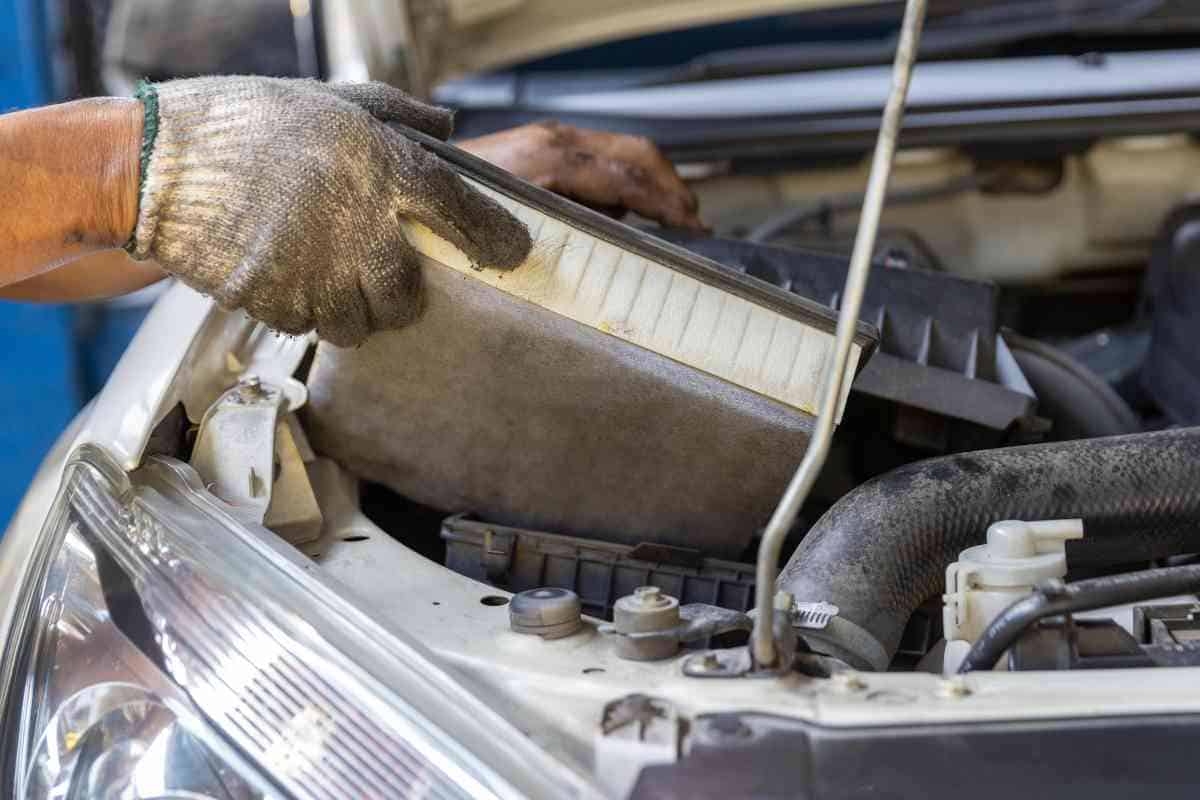
Mileage Indicators
Most manufacturers recommend replacing the air filter every 12,000 to 15,000 miles. However, if you often find yourself driving in dusty conditions or in heavy traffic, consider changing the filter more frequently to ensure your engine is protected.
Regularly monitor your mileage since the last filter change to maintain optimal performance. Knowing this is vital when you’re about to change car air filters.
Visual Inspection
A simple visual check can provide a lot of insight. A clean air filter usually appears white or off-white. If it looks darkened or visibly soiled, it’s time for a replacement.
Also, ensure the filter fits correctly without any misalignment or damage, as this could affect engine efficiency.
Performance Symptoms
Usually, if your car starts acting up, checking the air filter is one of the first steps. You might need to learn how to change car air filters if this has happened to you.
Be alert to changes in your vehicle’s performance, which can signal the need for a new air filter. Symptoms might include reduced fuel efficiency, unusual engine noises, or difficulty starting.
These issues suggest it might be time to check the air filter—even if it’s not yet due for a routine change. For a thorough list of symptoms and guidance, resources like AutoZone provide detailed information.
Related Post! A Guide To Windshield Maintenance
Preparation: Tools and Materials Needed for Changing an Air Filter
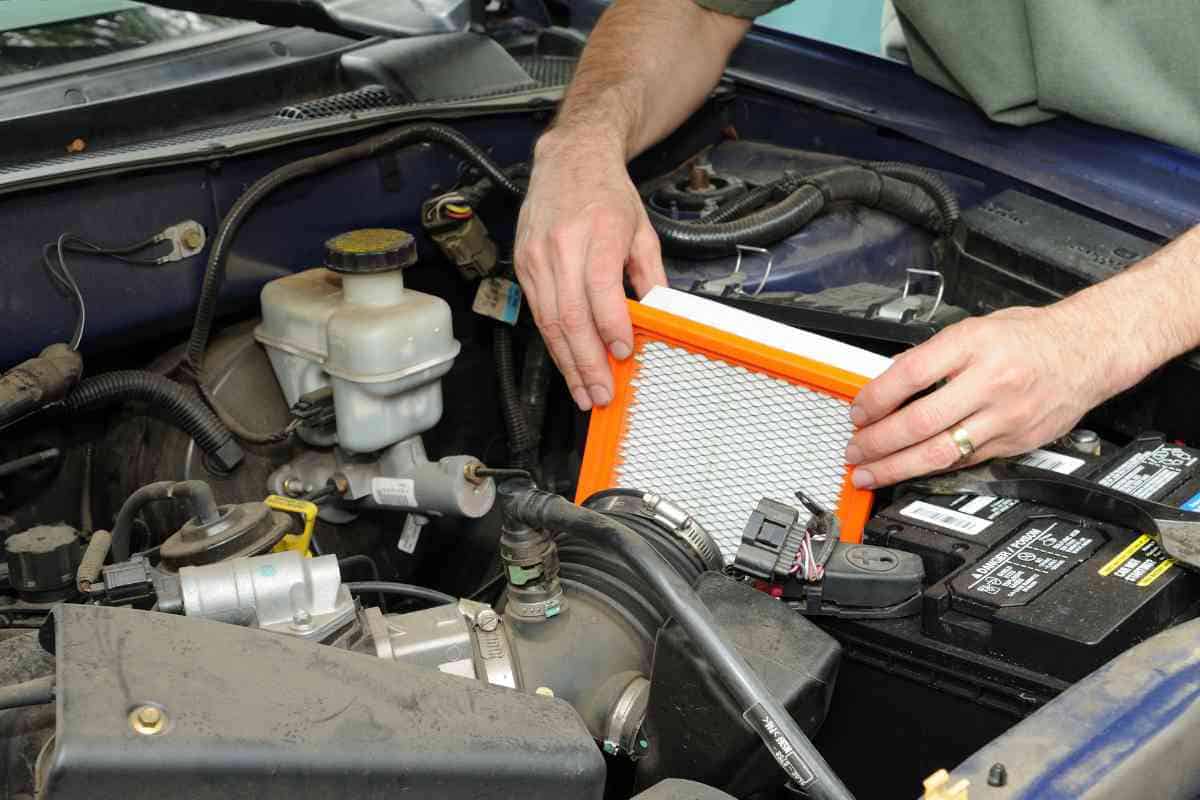
Ready to replace your air filter? Having the right tools and materials on hand will make the process smoother and faster. Here’s what you’ll typically need:
- New Air Filter: Make sure to get the correct model specific to your vehicle.
- Screwdriver: Needed to remove the screws from the air filter housing, although some vehicles use hand-removable clips.
- Ratchet and Socket Set: Some air filter housings are secured with bolts, necessitating a ratchet.
- Work Gloves: Protect your hands from grease and sharp objects in the engine bay.
- Inspection Light: Good lighting is crucial for working under the hood.
- Owner’s Manual: Check for any specific instructions related to your vehicle’s air filter replacement.
- Cleaning Rag: Use this to clean the housing and the seal area before installing the new filter.
Always keep your tools clean and organized. Checking your toolkit before starting the job can save a trip to the hardware store midway through the task.
Want To Change Car Air Filters? Prepare Your Vehicle
Before diving into changing your car’s air filter, it’s important to create a safe and effective workspace. Here’s how you can prepare to ensure a smooth and safe process.
Safety First
Safety is paramount when working on your vehicle. Start by ensuring your car is parked on a flat and stable surface. Always wait for the engine to cool down before beginning; a hot engine not only poses a risk to your safety but can also complicate the task.
Wearing safety glasses is a wise precaution to protect your eyes from potential debris and dust. This simple step can prevent unnecessary injuries.
Locating the Air Filter Housing
Understanding where your air filter housing is located is crucial. Typically, you’ll find this component housed in a black plastic box near the engine.
The position might vary slightly depending on your car model; it could be highly visible or somewhat hidden. Refer to your vehicle’s owner’s manual to eliminate any guesswork. The housing is usually secured by hand-releasable clamps or screws, so having your toolbox ready and within reach is a smart move.
Related Post! Do Teslas Need Oil Changes?
Removing the Old Air Filter
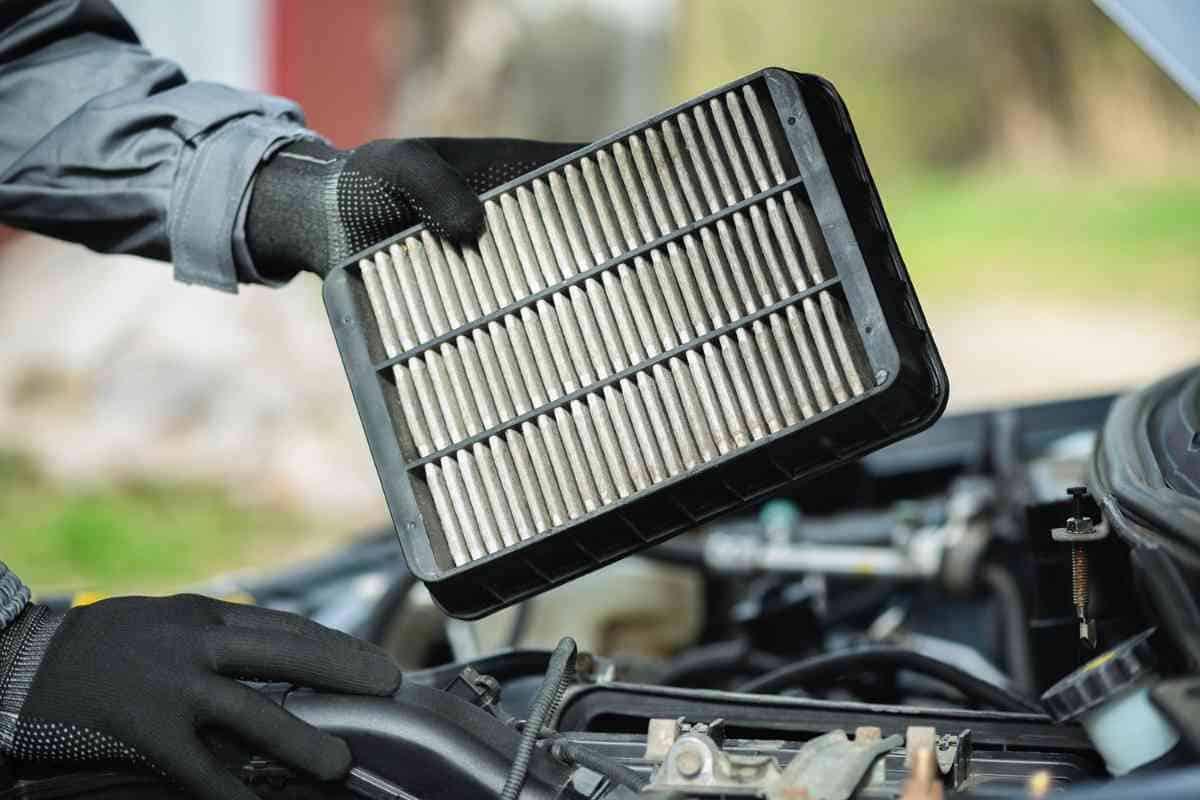
Changing the air filter involves several careful steps to ensure that no debris compromises the engine’s interior.
- Find the Air Filter Housing: Identify the air filtration unit, generally a black plastic box located near the engine. Consult your owner’s manual if the location isn’t immediately obvious.
- Remove the Housing Cover: Open the housing by releasing metal clips or unscrewing. Handle these components gently to avoid damage or loss.Tip: Keep all removed screws or parts in a safe place—you’ll need them to secure the cover once you’re done.
- Note the Airflow Direction: Before removing the old filter, observe the direction of airflow indicated by arrows on the filter. Correct airflow direction is crucial for effective operation.
- Gently Remove the Old Filter: Carefully lift out the old filter, ensuring that no debris falls into the air duct.Trick: Use a small brush or hand vacuum to clean the inside of the housing before inserting the new filter. This helps keep the engine free of dirt.
- Dispose of the Old Filter Properly: Responsible disposal is part of maintaining both your car and the environment. Ensure the old filter is discarded according to local regulations.
By following these steps, you’ll not only ensure that your car’s engine continues to perform optimally, but you’ll also extend its lifespan. Remember, when you change car air filters, you’re doing a straightforward task that greatly contributes to your vehicle’s efficiency and is a great way to become more hands-on with routine car maintenance.
Inspecting the Air Filter Housing
Before replacing your car’s air filter, it’s essential to inspect the air filter housing to ensure it’s clean and intact. Here’s a step-by-step guide to make sure the housing is ready for a new filter, thereby guaranteeing optimal engine performance.
- Locate the Housing: Typically, this is a black plastic box with metal clips, located either at the top or the side of the engine. The location can vary depending on your car model.
- Open the Housing: Gently unclip or unscrew the housing. Handle these parts with care as they can be more fragile than they appear.
- Examine for Debris: Check for leaves, twigs, or any other buildup inside the housing. Even small blockages can significantly impact engine performance.
- Check for Damage: Inspect the housing for any cracks, warping, or other damage that might allow unfiltered air into the engine. Consider replacing the housing if any damage is found.
- Ensure a Tight Seal: When closing the housing after installing the new filter, make sure it seals properly to prevent unfiltered air from entering the engine.
Understanding the importance of a clean and well-maintained air filter housing is crucial, as it forms the first line of defense against engine contaminants.
Related Post! DIY Car Interior Cleaning Tips
Installing the New Air Filter
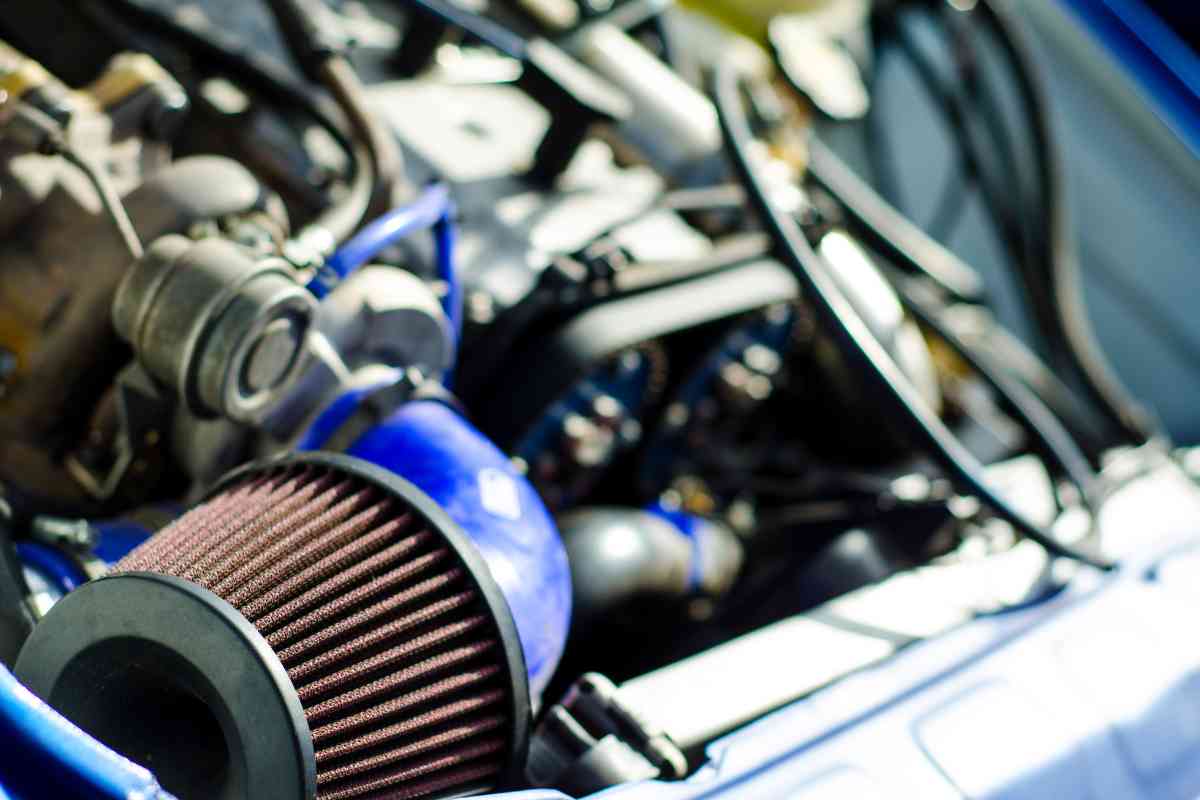
Once the old filter is out and the housing is prepared, installing the new filter is straightforward. Follow these steps for a seamless installation:
- Handle with Clean Hands: Ensure your hands are clean when handling the new filter to prevent transferring dirt or oil. When you change car air filters, it’s common to have hands dirty, and this can damage them.
- Align Properly: Position the new filter snugly in the housing, making sure the airflow direction arrow on the filter edge points towards the engine.
- Confirm Filter Size: Double-check that the new filter matches the dimensions of the old one to ensure a perfect fit.
- Check the Seals: The filter should have a rubber rim to create a tight seal in the housing. Ensure there are no gaps. Before you change car air filters, check the overall status of the product.
- Secure the Housing: Reattach any clips or screws removed during the opening process. If your vehicle, like some trucks, uses wing nuts for the air filter casing, this can often be a tool-free process.
- Press Firmly: Give the housing a gentle but firm press to make sure everything clicks back into place, ensuring no unfiltered air can enter the engine.
- Final Check: Do a final inspection to make sure the housing is properly sealed and that there are no leftover parts or tools.
By following these steps, you’ve not only successfully installed a new air filter but also taken a significant step towards maintaining your vehicle’s efficiency and longevity. This maintenance task, while simple, can greatly enhance your car’s performance and fuel efficiency.
Finalizing the Change
Once the new air filter is securely in place, it’s vital to properly reassemble everything to ensure your car runs smoothly and the filter performs its function effectively.
Reassembling Components
With the new filter installed, the next step is to reattach the air filter housing cover. Carefully position the cover back onto the housing.
If your vehicle utilizes clips, press them back into place until you hear a reassuring click. For housings held by screws or bolts, start by hand-threading them to prevent cross-threading. Once in place, tighten them with a screwdriver or ratchet, being mindful not to over-tighten, as this could crack the plastic housing.
If you learned how to change car air filters, you’ll see that installing them is easy, once you’re organized.
Checking for Proper Installation
Before you wrap up:
- Secure Placement: Give the air filter housing a gentle shake to ensure it’s firmly in place. Any movement could indicate that the cover isn’t securely fastened.
- Visual Inspection: Quickly look over the area to make sure no tools or foreign objects are left inside the housing.
- Hood Check: Lower the hood gently and ensure it locks securely. This is also a good moment to record the date of your filter change, helping you track when the next one is due.
Related Post! How Do Transmissions Work?
Maintenance Tips for Your Air Filter
The air filter is a crucial but often underestimated component of vehicle maintenance. Here’s how to keep it in top condition:
Frequency of Checks
Inspect your air filter every 12,000 miles, although more frequent checks may be necessary if you often drive in dusty conditions.
Visual Inspection
A healthy air filter will appear white or off-white. If it looks dirty or clogged, consider replacing it. A good test is to hold it up to the light; if light passes through sparingly, it’s time for a new filter.
Cleaning vs. Replacing
While some may suggest cleaning the filter by tapping out the dust or using compressed air, a thorough replacement is recommended if the filter is visibly dirty or damaged.
Choosing the Right Filter
Always choose a filter that is compatible with your car’s specifications. Consult trusted auto parts stores to find the exact match.
Installation Reminder
After installing a new air filter, remember to reset any maintenance reminder lights and update your service records. This ensures you won’t miss future changes.
Benefits of Regular Maintenance
By regularly maintaining your air filter, you can achieve:
- Better Gas Mileage: A clean filter helps maintain efficient fuel use.
- Improved Acceleration: Clean air flow can enhance engine responsiveness.
- Prolonged Engine Life: Prevents abrasive particulate matter from entering the engine, reducing wear and tear.
Regular attention to your air filter is a simple yet effective way to enhance your vehicle’s performance and longevity. Make it a key component of your routine vehicle maintenance to enjoy a smoother, more efficient drive.
You will see that learning how to change car air filters also involves maintaining them, to prevent damage.
